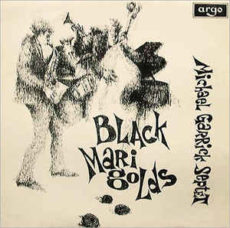
Daily Dose Of Jazz…
Trevor Ramsey Tomkins was born May 12, 1941 in London, England. As a young teenager, he first took up the trombone before switching to the drums on which he made his first professional appearance. Although he studied extensively, mostly in the classical vein, he was deeply interested in jazz, studied harmony and music theory, and in the early 60s moved permanently into this field.
Trevor worked and recorded several albums in small groups with trumpeter Ian Carr, as well as pianist Michael Garrick and saxophonist Don Rendell in the late 1960s and early 1970s. In the Seventies, he was a member of the jazz-fusion group Gilgamesh that was part of the Canterbury scene in Kent, England. He also performed and recorded with saxophonist Barbara Thompson, pianist Mike Westbrook, and others.
After spending some time in the United States, he returned to England and became one of the most sought after jazz drummers in the UK. Tomkins worked with Ian Carr’s Nucleus, Giles Farnaby’s Dream Band, David Becker, and Henry Lowther’s Quaternity. He appears on the 1971 album First Wind by Frank Ricotti and Mike de Albuquerque and on Tony Coe’s 1978 album Coe-Existence. He is also in demand as accompanist to American jazzmen visiting the UK, amongst them Lee Konitz.
Mainstream and bop drummer Trevor Tomkins, who has never been a leader and was a member of various trios and other line-ups with Roy Budd, remains a first call drummer and much-respected teacher on the jazz scene.
More Posts: drums,history,instrumental,jazz,music
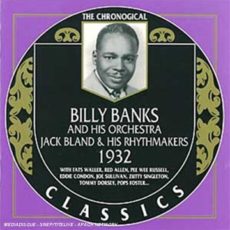
Daily Dose Of Jazz…
Jack Bland was born on May 8, 1899 in Sedalia, Missouri and learned to play the banjo. In 1924 he co-founded the Mound City Blue Blowers with Red McKenzie in St. Louis, Missouri. Their first hit record was Arkansas Blues, a success in Chicago and the American midwest. After Eddie Lang joined the group towards the end of 1924, they toured England.
The late 1920s saw Bland playing more cello and guitar and in 1929, Lang left the group, replaced by Gene Krupa. Also in 1929, the Blue Blowers appeared in a 1929 short film, The Opry House. Muggsy Spanier, Coleman Hawkins, and Eddie Condon would all play in the ensemble in the 1930s, which moved to more of a Dixieland sound.
Bland did session work in New York City with the Billy Banks Orchestra in the 1930s, with Pee Wee Russell, Red Allen, and Zutty Singleton. Following this, he recorded with a group called the Rhythmakers that included Pops Foster and Fats Waller at times.
By the 1940s Jack was playing on 52nd Street at Jimmy Ryan’s Club, playing with Allen and Singleton as well as Edmond Hall, Vic Dickenson, Ike Quebec, and Hot Lips Page. Some of their sessions were recorded by Milt Gabler and released on Commodore Records. From 1942 to 1944 he played with Art Hodes and also with Muggsy Spanier; he led his own band from 1944 to 1950.
In the 1950s, guitarist and banjoist Jack Bland moved to Los Angeles, California, retired from performing, and worked as a taxicab driver until he passed away in August 1968.
More Posts: banjo,cello,guitar,history,instrumental,jazz,music
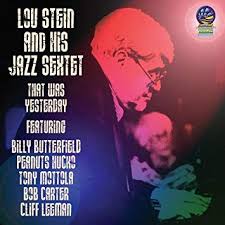
Daily Dose Of Jazz…
Lou Stein was born on April 22, 1922 in Philadelphia, Pennsylvania. By 1942 he had joined Ray McKinley’s band in 1942. While serving military service he played with Glenn Miller’s Army Airforce Band stateside during World War II but never went overseas.
After the war, he worked with Charlie Ventura in 1946 and 1947 and became a session musician. Lou performed with the Lawson-Haggart Band, Benny Goodman, Sarah Vaughan, the Sauter-Finegan Orchestra, Louie Bellson, Red Allen, Coleman Hawkins, and Lester Young.
Recording as a bandleader, in 1957 Stein had a U.S. Top 40 hit with Almost Paradise, which peaked at No. 31 on the Billboard Hot 100. His cover version of Got a Match made the Cashbox Top 60 in 1958. His most famous composition was East of Suez.
He played with Joe Venuti and Flip Phillips from 1969 to 1972. From 1954 to 1994 he recorded sixteen albums as a leader and through the Fifties, he recorded with Louis Bellson, Woody Herman, Lee Konitz, Joe Newman, Charlie Parker, Cootie Williams. Pianist and composer Lou Stein, who was comfortable in swing, bop, Dixieland, and commercial settings, passed away on December 11, 2002.
More Posts: bandleader,composer,history,instrumental,jazz,music,piano
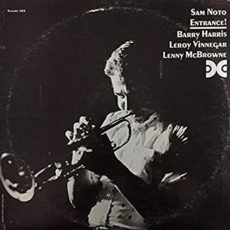
Daily Dose Of Jazz…
Sam Noto was born on April 17, 1930 in Buffalo, New York, where he learned to play the trumpet. While still in his early twenties he was invited to join Stan Kenton’s band as the lead trumpeter, playing with him full-time until 1958. He returned to the Kenton band in 1960 after a year-long stint touring Europe with Louie Bellson and Pearl Bailey in 1959.
Between 1964 and 1967 for two separate periods, Sam was also a member of the Count Basie Orchestra. He worked primarily in Las Vegas, Nevada after 1969. It was while living and working in Vegas, he became acquainted with trumpeter Red Rodney who was influential in Noto’s prolific recording career with Xanadu.
Relocating to Toronto in 1975 he quickly became a first-call studio player and member of Rob McConnell’s “The Boss Brass” for a number of years in the ‘80s. Noto established his own successful groups including the Sam Noto Quintet, performing frequently throughout Toronto in the ‘90s and early 2000s.
He recorded six albums as a leader and another eighteen as a sideman working with Count Basie, Stan Kenton, Rob McConnell, Frank Rosolino, Red Rodney, Don Menza, Buddy Rich, Joe Romano, Charlie Parker, Mel Lewis, Dizzy Gillespie, Louie Bellson, and Kenny Drew. He has had recording associations with Xanadu, Muse, Capitol, Sea Breeze, Dot, Coliseum, Reprise, Supermono, and Unisson record labels.
Now residing in Fort Erie, Ontario, trumpeter and bop soloist Sam Noto continues to play in and around the Toronto area, as well as closer to home in Buffalo, New York jazz clubs.
More Posts: bandleader,history,instrumental,jazz,music,trumpet
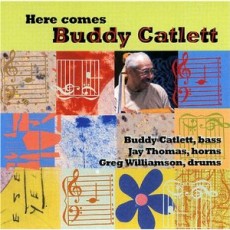
Daily Dose Of Jazz…
Buddy Catlett was born George James Catlett on June 13, 1933 and grew up in Seattle, Washington. During his childhood he listened to records his mother brought home, and learned to play the cornet around age 10 after hearing Louis Armstrong, and by fourteen had saved enough money from his movie theater job to buy a saxophone. He would soon be gigging with his childhood friend Quincy Jones till 5:30 in the morning and then the two would go to Garfield High School a few hours later. It was during this time that he also met and performed with Ray Charles.
He first professional gig was with vibraphonist Bumps Blackwell’s band that included Ernestine Anderson, but by 17 had to stop performing due to tubercular pleurisy that hospitalized him for two years. Not to be beaten, he started taking bass lessons with Tiny Martin of the Seattle Symphony. Learning quickly he was soon asked to join pianist Horace Henderson’s band and on the road he went. This was followed up with a stint with Cal Tjader, a move to New York in 1958, and a European tour with Quincy Jones playing for the musical Free and Easy starring tapper Harold Nicholas.
Throughout his career he performed with Billie Holiday, Ella Fitzgerald, Sarah Vaughan, Frank Sinatra, Count Basie and Louis Armstrong among others. He has appeared on over 100 recordings and is recognizable on the Sinatra/Basie arrangement of Fly Me To The Moon and Armstrong’s What A Wonderful World. With declining health, bassist Buddy Catlett scaled down his jazz performances in his hometown of Seattle but has not lost his popularity or respect from an admiring community. Bassist Buddy Catlett passed away on November 12, 2014, at age 81 at the Leon Sullivan Health Care Center in Seattle’s Central District.




